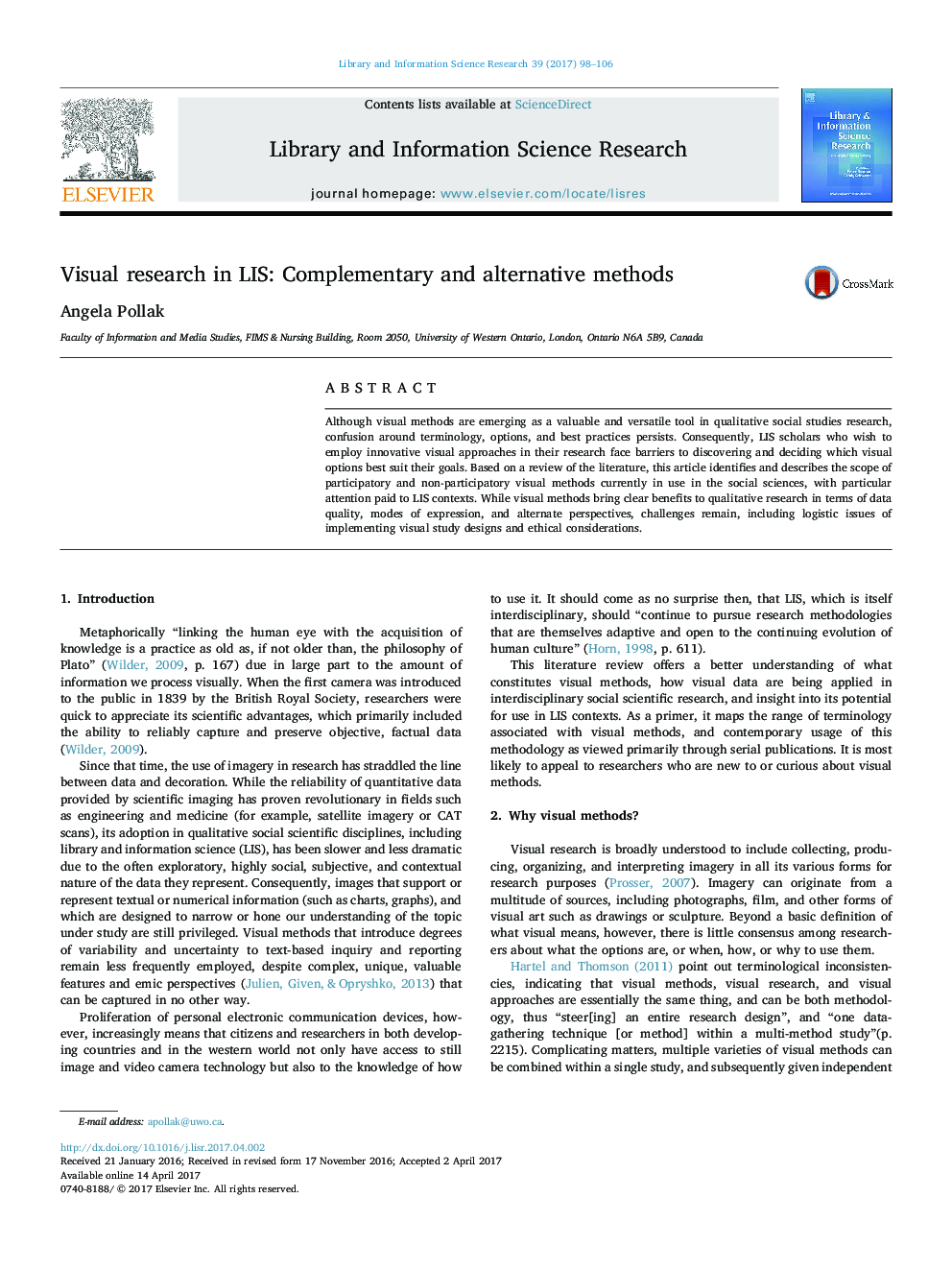| Article ID | Journal | Published Year | Pages | File Type |
|---|---|---|---|---|
| 5123886 | Library & Information Science Research | 2017 | 9 Pages |
â¢Visual methods of data collection can be both participatory (emic) and nonparticipatory (etic).â¢When used as part of a multimethod approach to data collection, visual methods can improve the scope and quality of data.â¢Supporting inductive methodologies, visual methods also accommodate participants with differing ages and verbal abilities.â¢Visual methods present additional logistic challenges and may expose informants to legal, safety, and identification risks.
Although visual methods are emerging as a valuable and versatile tool in qualitative social studies research, confusion around terminology, options, and best practices persists. Consequently, LIS scholars who wish to employ innovative visual approaches in their research face barriers to discovering and deciding which visual options best suit their goals. Based on a review of the literature, this article identifies and describes the scope of participatory and non-participatory visual methods currently in use in the social sciences, with particular attention paid to LIS contexts. While visual methods bring clear benefits to qualitative research in terms of data quality, modes of expression, and alternate perspectives, challenges remain, including logistic issues of implementing visual study designs and ethical considerations.
